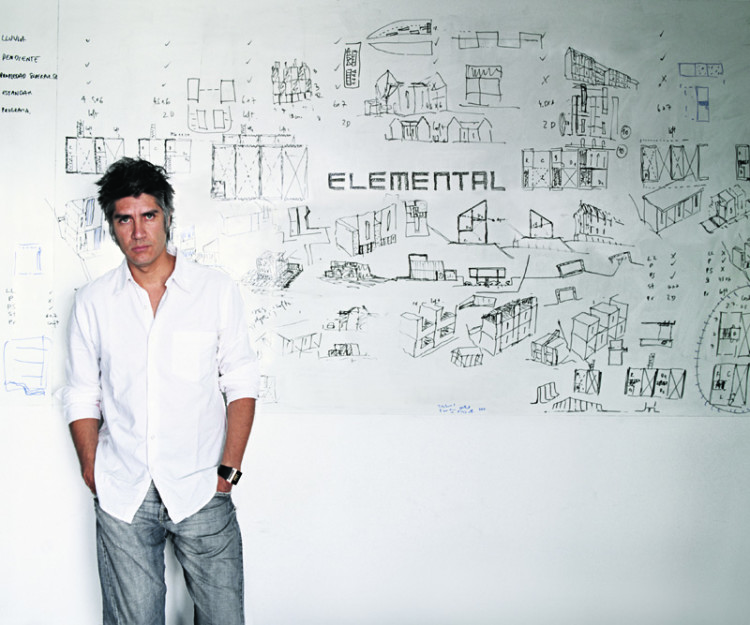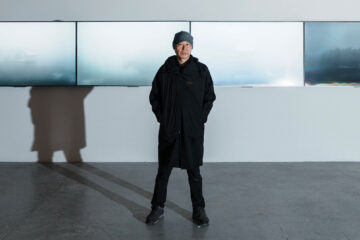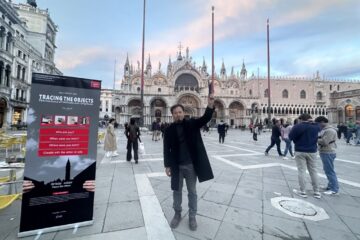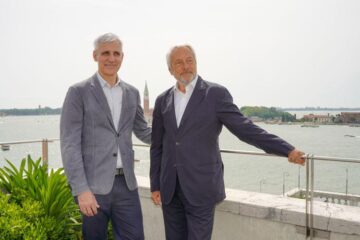STATEMENT OF ALEJANDRO ARAVENA – DIRECTOR OF THE 15TH INTL. ARCHITECTURE EXHIBITION 2016

Alejandro Aravena appointed Director of the 15th Intl. Architecture Exhibition 2016
15th Intl. Architecture Exhibition to take place from 28 May to 27 November 2016
In his trip to South America Bruce Chatwin encountered an old lady walking the desert carrying an aluminum ladder on her shoulder. It was German archeologist Maria Reiche studying the Nazca lines. Standing on the ground, the stones did not make any sense; they were just random gravel. But from the height of the stair those stones became a bird, a jaguar, a tree or a flower.
We would like the Biennale Architettura 2016 to offer a new point of view like the one Maria Reiche has on the ladder. Given the complexity and variety of challenges that architecture has to respond to, REPORTING FROM THE FRONT will be about listening to those that were able to gain some perspective and consequently are in the position to share some knowledge and experiences with those of us standing on the ground.
We believe that the advancement of architecture is not a goal in itself but a way to improve people’s quality of life. Given life ranges from very basic physical needs to the most intangible dimensions of the human condition, consequently, improving the quality of the built environment is an endeavor that has to tackle many fronts: from guaranteeing very concrete, down-to-earth living standards to interpreting and fulfilling human desires, from respecting the single individual to taking care of the common good, from efficiently hosting daily activities to expanding the frontiers of civilization.
Our curatorial proposal is twofold: on the one hand we would like to widen the range of issues to which architecture is expected to respond, adding explicitly to the cultural and artistic dimensions that already belong to our scope, those that are on the social, political, economical and environmental end of the spectrum. On the other hand, we would like to highlight the fact that architecture is called to respond to more than one dimension at the time, integrating a variety of fields instead of choosing one or another.
REPORTING FROM THE FRONT will be about sharing with a broader audience, the work of people that are scrutinizing the horizon looking for new fields of action, facing issues like segregation, inequalities, peripheries, access to sanitation, natural disasters, housing shortage, migration, informality, crime, traffic, waste, pollution and participation of communities. And simultaneously will be about presenting examples where different dimensions are synthesized, integrating the pragmatic with the existential, pertinence and boldness, creativity and common sense.
Such expansion and synthesis are not easy to achieve; they are battles that need to be fought. The always menacing scarcity of means, the ruthless constraints, the lack of time and urgencies of all kinds are a constant threat that explain why we so often fall short in delivering quality. The forces that shape the built environment are not necessarily amicable either: the greed and impatience of capital or the single mindedness and conservatism of the bureaucracy tend to produce banal, mediocre and dull built environments. These are the frontlines from which we would like different practitioners to report from, sharing success stories and exemplary cases where architecture did, is and will make a difference.
Alejandro Aravena
Alejandro Aravena (Chile, 1967) graduated in Architecture from Universidad Católica de Chile in 1992. In 1991, still as a student, he participated at the Venice Prize of the 5th International Architecture Exhibition of la Biennale di Venezia. In 1993 he studied History and Theory at IUAV and engraving at the Accademia di Belle Arti di Venezia.
He established Alejandro Aravena Architects in 1994. His work include several buildings for Universidad Catolica: Mathematics School (1998), Medical School (2001), Architecture School (2004), Siamese Towers (2005) and more recently the Angelini Innovation Center (2014). It also includes a Montessori School (2000), St. Edwards University in Austin, Texas (2008), a Children Workshop and Chairless for Vitra in Germany (2008), writer’s cabins for Michalsky Foundation in Switzerland (2015) and a building for Novartis in their new campus in China (2015). In 2013 he was shortlisted for the New Center for Contemporary Arts of Moscow and won the competition for the Teheran Stock Exchange in Iran.
From 2000 until 2005 he was professor at Harvard University, where together with engineer Andres Iacobelli he found the social housing initiative ELEMENTAL, an Urban Do Tank, partner of Universidad Catolica and Chilean Oil Company Copec. Since then, Elemental has expanded their field of action to a wide range of infrastructure, public space and public buildings that use the city as a shortcut towards equality: the Metropolitan Promenade and Children’s Park in Santiago, the reconstruction of the city of Constitucion after the 2010 earthquake, the redesign of the Copper mining town of Calama or the intervention of the Choapa Region for Pelambres Mining Company.
His work has been distinguished with several awards such as the Design of the Year (London Design Museum, 2015), 1st Prize of Zumtobel Global Award (Austria, 2014), World Green Building Council Chairman’s Award (USA, 2014), the 1st Prize Index Award (Denmark, 2011), Silver Medal Holcim Awards for Sustainable Construction (Switzerland, 2011), 1st Prize Brit Insurance Design Awards (UK, 2010), Curry Stone Design Award (USA,2010), the Marcus Prize (USA, 2009), the Silver Lion at the 11th International Architecture Exhibition of la Biennale di Venezia (2008), the Global Award for Sustainable Architecture (France, 2007), the Erich Schelling Architecture Medal (Germany,2006) and the Bicentennial Medal for his contribution to the country’s development (Chile, 2004).
His work has been featured in the São Paulo Biennale (2007), the Milano Triennale (2008), the Venice Architecture Biennale (2008 and 2012), the MoMA in New York (2010), the MA Gallery in Tokyo (2011) and is part of the collection of the Centre Pompidou.
Since 2009 he is member of the Pritzker Prize Jury. In 2010 he was named International Fellow of the Royal Institute of British Architect and identified as one of the 20 new heroes of the world by Monocle magazine. He is a Board Member of the Cities Program of the London School of Economics since 2011; Regional Advisory Board Member of the David Rockefeller Center for Latin American Studies; Board Member of the Swiss Holcim Foundation since 2013; Foundational Member of the Chilean Public Policies Society; Leader of the Helsinki Design Lab for SITRA, the Finnish Government Innovation Fund. He was one of the 100 personalities contributing to the Rio +20 Global Summit in 2012.
He was also a speaker at TED Global in 2014.
Author of Los Hechos de la Arquitectura (Architectural Facts, 1999), El Lugar de la Arquitectura (The Place in/of Architecture, 2002) and Material de Arquitectura (Architecture Matters, 2003). His work has been published in over 50 countries, Electa published the monography Alejandro Aravena; progettare e costruire in (Milan, 2007) and Toto published Alejandro Aravena; the Forces in Architecture (Tokyo, 2011). Hatje-Cantz published the first monograph dedicated to the social housing projects of Elemental: Incremental Housing and Participatory Design Manual (Berlin, 2012) launched at the 12th International Architecture Exhibition of la Biennale di Venezia.






No Comment